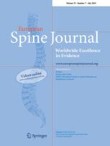
Abstract
Objective
To study radiological and clinical differences between robotic-assisted pedicle screw fixation with and without real-time optical tracking.
Methods
Patients who underwent lumbar internal fixation in our hospital from June 2017 to February 2020 were divided into Tinavi group (with optical tracking) and Renaissance group (without optical tracking) according to assisted technology. The imaging data of the patients were collected, and the accuracy of screw implantation was measured according to Rampersaud A–D grade. Clinical outcomes such as operative time, fluoroscopic time and radiations dose were also collected.
Results
A total of 376 patients were included, including 201 patients in the Tinavi group with 968 screws implanted and 175 patients in the Renaissance group with 822 screws implanted. The accuracy of "perfect" and "clinically acceptable" pedicle screw implantation in the Tinavi group was 94.9%–98.7%, respectively, while in the Renaissance group was 91.2%–94.5%, respectively. There was significant difference between the two groups (P < 0.05). The operative time and operative time per screw in the Tinavi group were lower than those in the Renaissance group. However, fluoroscopic time per screw and radiations dose of the Tinavi group were significantly higher than those of the Renaissance group.
Conclusion
Optical tracking in robotic system appears to increase accuracy because of the ability to detect the real-time position of the patient. Although there are still many problems to be solved, robot with optical tracking system shows its great potential in clinical application.



Δεν υπάρχουν σχόλια:
Δημοσίευση σχολίου